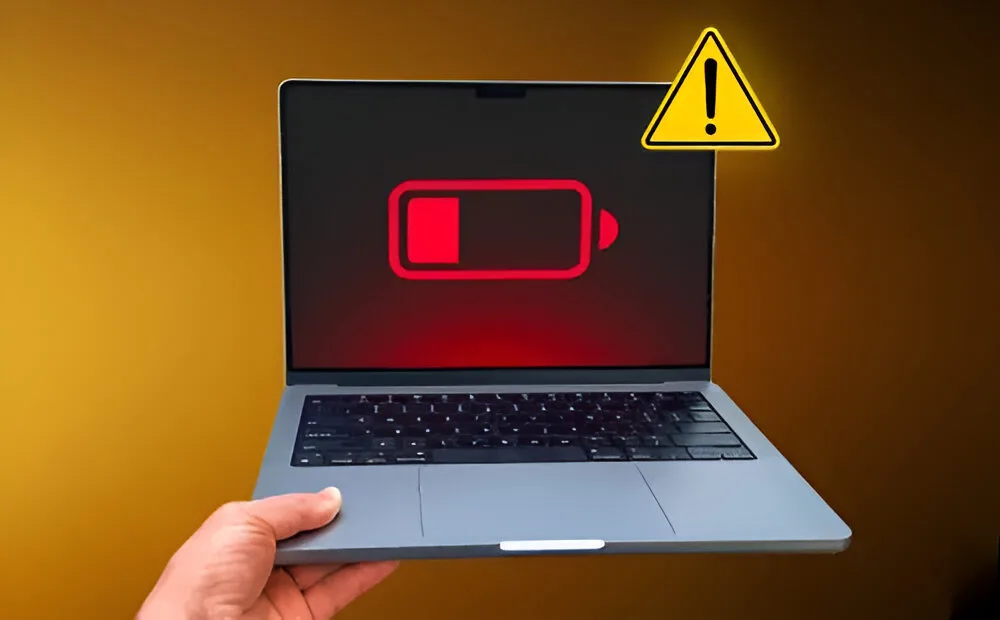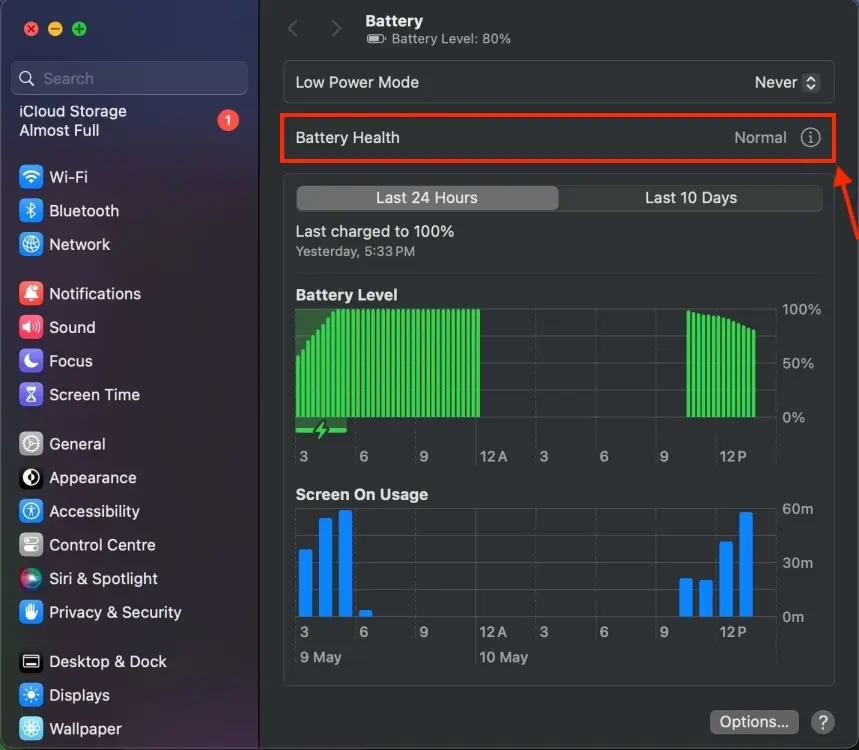
As an Apple user, I frequently monitor the battery health of my iPhone, iPad, and MacBook. Everything appears to be in order when my devices maintain normal battery health. However, encountering the “Service Battery” message on my MacBook can be quite distressing, leading to poor battery performance and uncertainty about what steps to take next. In this article, we’ll explore the meaning of “Service Battery” on a MacBook and how to address it. Let’s dive right in.
What Does “Service Battery” or “Service Recommended” Mean on a Mac?
Similar to iPhones, MacBooks also feature a Battery Health function to assess battery degradation over time. You can check your Mac’s battery health by navigating to System Preferences -> Battery -> Battery Health. The Battery Health status typically indicates one of the following:
1. Normal: Your MacBook’s battery is operating as expected.
2. Service Recommendation: Your MacBook’s battery is holding less charge than when new, or it is experiencing abnormal functionality.

It’s important to note that earlier versions of macOS may display battery health statuses such as “Service Battery,” “Replace Soon,” or “Replace Now.” These messages may appear in the battery status menu rather than the Battery settings.
When your MacBook displays “Service Battery” or “Service Recommended,” it indicates that the battery requires servicing or that its reduced charging capacity could impact your usage. However, you can continue using your MacBook safely. If the degraded battery is causing inconvenience, you can visit the nearest Apple Store or an Apple-authorized service provider to have your battery assessed.
Before planning a visit, it’s wise to conduct a quick investigation on your own.
When Should You Replace MacBook Battery?
When you see the “Service Battery” notification on your MacBook or the battery health status always says “Service Recommended,” it’s essential to check the System Report to investigate further. Specifically, you should examine the charge cycle count on your Mac.
For those who might not know, MacBooks use rechargeable lithium-ion batteries that operate in charge cycles. The battery cycle count indicates the number of times you’ve fully discharged and charged your Mac’s battery. One cycle is counted when your MacBook is charged from 0 to 100%.
Your Mac’s battery might need servicing because it has reached its maximum cycle count. Apple recommends replacing your Mac’s battery once it has reached this limit to ensure optimal performance. Therefore, it’s crucial to check the cycle count before deciding to replace your Mac’s battery. Here’s how to do it:
1. On your Mac, hold the Option key and click the Apple icon.
2. Select System Information and choose Power from the left sidebar.
3. Here, you’ll find the battery cycle count, battery condition, and other details.

The maximum battery cycle count varies depending on your MacBook model. Newer MacBook models typically support at least 1,000 cycles before showing service battery notifications, while older models may need a battery replacement after around 500 cycles.
If your MacBook’s charge cycles exceed 1,000 or 500 (depending on the model), the battery is likely nearing the end of its lifespan. In this case, it’s best to take your Mac to an authorized Apple service provider. The experts will assess your Mac and determine if the battery needs replacement.
How to Fix “Service Battery” Warning on Mac?
The “Service Battery” warning doesn’t always mean your Mac’s battery needs replacement. Sometimes, it indicates that the battery isn’t functioning properly. There are simple ways to address this warning, which might extend the life of your current MacBook before you need to consider a new one.
1. Reset SMC
If you’re using an older, Intel-powered MacBook, you can try resetting the SMC (System Management Controller) to fix the “Service Battery” warning. The SMC manages power on your MacBook, and sometimes, issues with the SMC can trigger these warnings. Fortunately, resetting the SMC can resolve many complex battery-related issues, so it’s worth a try.
For Macs equipped with the T2 chip, follow these steps:
1. Power off your Mac.
2. Press and hold the Control + Option (Alt) + Shift keys.
3. Keep these keys held down for 7 seconds.
4. Next, press and hold the Power button.
5. Continue holding all four keys for an additional 7 seconds, then release them.
6. Wait a few seconds, then press the Power button to turn on your MacBook.
7. For Macs featuring M-series chips, there’s no need to manually reset the SMC.
2. Recalibrate Your Mac’s Battery
Another method to address the “Service Battery” warning is by recalibrating your MacBook’s battery. This involves fully discharging and then recharging the battery to optimize its performance and ensure accurate battery health readings. This process can be time-consuming, taking up to a day. Here’s how you can recalibrate your MacBook’s battery:
1. Charge your MacBook to 100%.
2. Use your MacBook for a few hours while it remains connected to a power source.
3. Disconnect the charger and continue using your Mac until the battery is completely drained.
4. Allow your MacBook to sit without power for a few hours or overnight.
5. Finally, recharge your MacBook to 100%.
If recalibrating the battery doesn’t resolve the issue, your MacBook may have more complex battery-related problems. In such cases, it’s advisable to visit an Authorized Apple Service Center. Avoid DIY solutions or cheaper alternatives to ensure proper maintenance of your device.

0 Comments